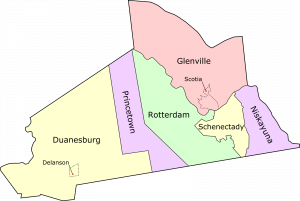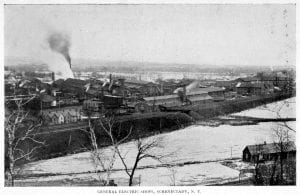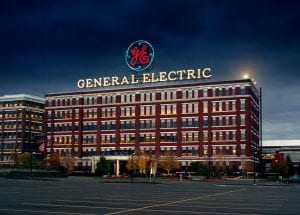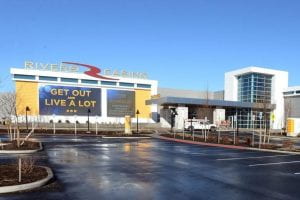Overview of Two Communities

For the past 20 years, I have lived in a town called Niskayuna, a suburb of Schenectady County in New York. Niskayuna happens to be between a 5-10 minute drive from Union College, which is in the neighboring town of Schenectady, NY. As of 2019, Schenectady is almost three times the size of Niskayuna, with a population of 65,273, compared to 22,365 (1,2). I have grown up in Niskayuna, attended Niskayuna High School, and came to Union College for my undergraduate studies. The topic of this week’s blog is to discuss the socioeconomic factors that affect my community. Our class definition of health is, “Health is determined by one’s physical and mental well being which is directly impacted by personal choice and various social determinants (socioeconomic status, access to resources, racial disparities, etc.) tailored to an individual’s need”. As I am older now, I have observed a stark contrast between Niskayuna and Schenecatdy, and am learning how the societal differences between the two communities can show how people’s personal choice has been impacted by different socioeconomic factors in their community. Ultimately, these factors influence the health of the community.
Factors that Separate the Communities


Schenectady used to be one of the most thriving cities in New York State, home to Thomas Edison’s original lighting company, General Electric, and the conglomerate’s large-scale power manufacturing business. As GE slowly relocated, many lost their jobs and this transformed their way of living. Schenectady has continued to slide, and the division between the communities increased over time. For example, financial resources are an important socio-economic factor that directly affect people’s access to care and resources that would change their health. In 2018, the Niskayuna median income was $109,685, while in Schenectady it was $44,826 (1,2). In Niskayuna, 4.1% of people live in poverty, while in Schenectady 18.4% live in poverty (1,2). Education is another factor that directly affects the trajectory of people’s lives, specifically their access to adequate-paying employment and resources that will affect their health. Between 2014-2018, in Niskayuna, 97.5% of people 25+ had high school degrees and higher, and 61.4% had bachelor’s degrees and higher, while in Schenectady, 84.2% of people 25+ had high school degrees and higher, and 21.4% had bachelor’s degree and higher (1,2). As Schenectady’s population and property values declined, the demographics began to shift, and racial disparities started to influence the area’s development, potential for investment, and resources. Niskayuna is a predominantly white community, with 83.2% white, 9.6% Asian, 3.3% African American, and 4.0% Hispanic, while Schenectady is 58.1% white, 20.8% African American, 6.6% Asian, 10.4% Hispanic (1,2). In the 21st century, the internet is necessary for communication, education, access to care, and other resources. In Schenectady, 77.2% of households had an internet connection, while in Niskayuna, 89.6% of households had internet access (1,2). The neighboring communities have such distinct differences in access to resources such as healthcare, education, and financial resources, which directly influence the health of the community.
Moving Forward: Government Policy

Efforts for the revitalization of Schenectady continue to move forward in the community and promote development in the area. The City of Schenectady drafted their City of Schenectady Comprehensive Plan in February 2008 that plans to revolutionize the 340 acre Downtown Neighborhoods (3). Many of those in these neighborhoods live at or below the poverty level, and the area suffers from a lack of commercial and retail development (3). Many businesses have shut down and left, and resources are diminishing for those who need it. The city plans to attract developers to build cafes, restaurants, and other retail, and revitalize the infrastructure (3). The city plans to improve transportation, add new public transit amenities, and improve pedestrian walkways and lighting (3). Furthermore, the city plans to create new recreational spaces, build new housing and condominium complexes, and create new parks and green spaces (3). Another important area is economic development, where the city will help nourish small businesses and improve the development of living wage jobs (3). An example of a revitalization project is The Mohawk Harbor Complex, which replaced the old American Lighting Company site, and included the $300 million state-funded Rivers Casino and Resort (4). The Galesi Group poured in $150 million into a complex that included two hotels, including a Courtyard Marriott, brand-new apartment complexes, and a marina (4). This area was built to promote commercial development and investment around the area (4). The goal of the government-influenced revitalization is to promote investment and business in the Schenectady community, which will catalyze the development of resources, such as new shopping complexes, healthcare facilities, and other necessities that will improve access for the Schenectady community. Thus, better access for resources will improve the health of the community.
References:
- “QuickFacts: Niskayuna Town, Schenectady County, New York.” United States Census Bureau, United States Census Bureau, www.census.gov/quickfacts/niskayunatownschenectadycountynewyork.
- “ QuickFacts: Schenectady City, New York.” United States Census Bureau, United States Census Bureau, www.census.gov/quickfacts/fact/table/schenectadycitynewyork/PST045219
- “City of Schenectady Comprehensive Plan 2020.” City of Schenectady NY, City of Schenectady, Feb. 2008, www.cityofschenectady.com/196/Comprehensive-Plan.
- “History of the Site .” Mohawk Harbor, Galsei Group, www.themohawkharbor.com/the-history-of-alco-schenectady.

Comments by nathk